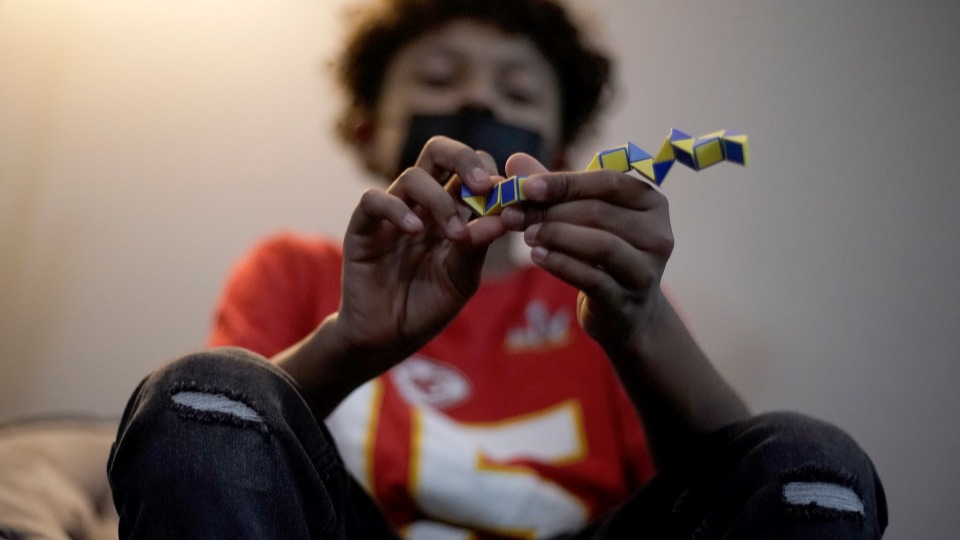
The “usual suspects” who protest Critical Race Theory have now turned to mental health programs, according to a recent article by NBC News. Mental health professionals employed by school districts are now being charged with occupying “dangerous, worthless” jobs. All of this came up when Tara Eddins of Southlake, Texas, showed up at a school board meeting demanding to know why the district was paying $90,000 per counselor to “give lessons to students on suicide prevention.”
Shortly thereafter, the Southlake Families PAC, a conservative group backing opposition to anti-racism education proposals, sent out an email to its supporters in the district arguing schools should “leave mental health and parenting to the parents.” Calls to leave mental health care to the home, behind closed doors as it were, are certainly not new. But they seem to have taken on a new life lately.
Some experts say we are in the midst of a “mental health crisis” today in, a crisis disproportionately affecting youth. Psychiatric Times points out that the COVID-19 pandemic is, in part, to blame for restricting access to needed psychotherapy services. The journal says mental health-based emergency room visits increased for those between ages 5 and 11 by 24% in 2019, and for those between the ages of 12 and 17 by 31%.
The mental health dynamics of the pandemic had both expected and surprising results. On the one hand, experiences of depression, anxiety, and substance abuse skyrocketed; on the other, suicide rates did in fact decrease in general. A recent article in Scientific American argues that mental health as an industry, and care-giving in general, has shifted for the better.
It’s true that several psychological services and clinics were able to pivot to more accessible means of therapy during the pandemic, such as telehealth-based services, and statistics overall suggested a move in the right direction for care. Bu there were still troubling disparities that general numbers hide. One of them is to be found in that decreasing suicide rate: Although rates declined overall, rates of suicide actually surged among people of color during the pandemic. This is only one of the notable disparities in the field of mental health. In order to understand the divide better, we have to take a look at the mental health care market.
When it comes to accessing mental health care on the open market, there is a duality of approaches facing those seeking treatment. Therapy, psychotropic drugs, and social outreach make up one side, while self-care and the so-called “wellness industry” are the other. According to the National Alliance of Mental Illness, the total costs of mental health treatments reached $225 billion in 2019. Depression, meanwhile, was estimated to have caused $44 billion in losses to workplace productivity that year.
These numbers appear staggering, but they should be compared with revenue generated by the $4.5 trillion wellness industry— a sector in which companies peddle everything from crystals, teas, incense, and designer wear to yoga, meditation classes, and “mindfulness” seminars.
Although it’s quite easy to make the case that the wellness industry is not a real alternative to psychotherapy and medical care, the truth is that for many people it has appeal as an affordable alternative to medical treatment. The main problem is thus not the fact that the wellness industry acts as a substandard stand-in, but rather why real mental health care costs so much and is so difficult to access.
Whether we’re talking about professional treatment or “holistic” products, both industries are offering commodities for sale on the market. They both depend on the logic of self-care—“look out for yourself”—and show a noticeable overlap with the neoliberal dictum of “hard work pays off.” People needing treatment find themselves working extra hours, seeking new jobs with proper benefits, carving out more time from their schedule, and more—all in order to gain access to or afford self-care.
But for those not seeking treatment, it would be a mistake to just say this is a problem for those looking for help. We all need good mental health, even if we haven’t thought ourselves in need of care. According to the World Health Organization, mental health is defined as “a state of well-being whereby individuals recognize their abilities, are able to cope with the normal stresses of life, work productively and fruitfully, and make a contribution to their communities.” The key phrases that stand out are the “normal stresses of life,” “work productively,” and the social aspect of contributing to one’s community.
Indeed, these are certainly necessary criteria to feel a specific type of well-being. However, when “normal stresses” fall within the coordinates of capitalism, we are left to wonder, “What are normal stresses?” And there is the challenging problem of finding fulfilling and “productive work” in a system founded on estranged labor, a system which leaves one to sell their physical, mental, and emotional efforts for whatever value the “market” determines they’re worth.
If we attempt to interrogate the “normal stresses” of any one person’s life, we can imagine that someone with food security, unquestioned access to clean water, unpolluted air to breathe, and proper health benefits would experience less of the “normal stresses” than someone who lives in a food desert which is considered a minority community, has no guarantee of clean water, and has to depend on public transit and or a second job to survive.
Yet we are barraged with injunctions to take more time to ourselves, eat better, drink more water, and breathe right. These, we are assured, are the proper foundation to any form of good health.
It’s one thing to relativize “normal” here, but it’s another thing entirely to understand that those who don’t meet the criteria of “normal” are foreclosed from any sort of mental health whatsoever. The core conclusion of the “self-care” argument then becomes clear: Mental health is for those who can afford it.
This is the state of mental health discourse in the U.S. today. Going back to Southlake, Texas, we have to ask whether tackling this is this something parents can take on themselves?
That complaining mom Tara Eddins argues, “At Carroll [Independent School District], you are actually advertising suicide.” Of course, Eddins takes the “contagion” approach, where to even talk about suicide to young people increases their interest with it. Like almost any observation, it isn’t without its kernel of truth. Suicide contagion is, in fact, a real phenomenon and speaks to the social role of both suicide and mental well-being. However, her criticism misses the mark entirely: Not only is the idea of suicide already entirely ubiquitous today anyway, but repressing suicide as a topic of conversation will only make its return in reality all the more traumatic.
Forbidding discussion of it also has major effects on those grieving after a loss by suicide. If a parent does not want their child hearing about suicide at all, what hope does the child have of talking about any mental health concerns with their parents?
Indeed, it is evident that as this current crisis gets worse, families are not any more equipped to confront it than the mental health care industry is. Certainly, religion and the implicit morality of what passes for “family values” is at work in the arguments by those like Eddins, but it should be remembered that her original complaint was actually about the school district’s budget.
Regardless of whether or not the critics like her attacking schools are sincere in their concern about the proper time and place for children to receive mental health information, the real argument being made is clear: It comes down to money.
The truth of the matter is that the U.S. is facing not just a mental health crisis; what we’re really up against is a mental care crisis. If someone cannot afford the means to attain mental stability and well-being, their mental health is deemed worthless by the market. Where Eddins properly misses the point is in the fact that the district’s employing of counselors is actually affordable care—purchased by individuals on the market, these services can cost over $10,000 a year per patient (using depression as the model here). What Eddins’ argument overshadows is that mental health care is available to her child, yet she wants to close off that access.

If mental health care is to become more accessible, attention must be focused on the two factors of affordability and availability. If receiving any sort of proper care was only a matter of access, people wouldn’t avoid calling ambulances because of the expected bill; we wouldn’t need to start GoFundMe campaigns to afford insulin; and we wouldn’t need so much literature on how to find “affordable” mental health care.
As this article from CNBC points out, “access to care can [be] prohibitively expensive” which points out the inherent limit of the word “access” leaving one to wonder why we celebrate its use when we hear stories on new grocery stores opening or arguments of how hunger has been declining for years—a fact that is not only no longer true but meant nothing to those whose state-of-being didn’t change by having more access. “Access” is not enough without money.
Without talking about affordability and availability, the focus on mental health, rather than care, puts the onus on the individual. Despite mental health becoming more “accessible” today, these questions are still to be addressed. But then again, perhaps they’ve already been answered. The mental health deficit can only be fully understood as not so much the individual issues of the mentally ill or suicidal but rather more as the structural inequality of a double-sided market that sees symptoms as opportunities for profit—whether via traditional therapy or “wellness solutions.” Until our care industry is fixed, the so-called mental health crisis is here to stay.












Comments